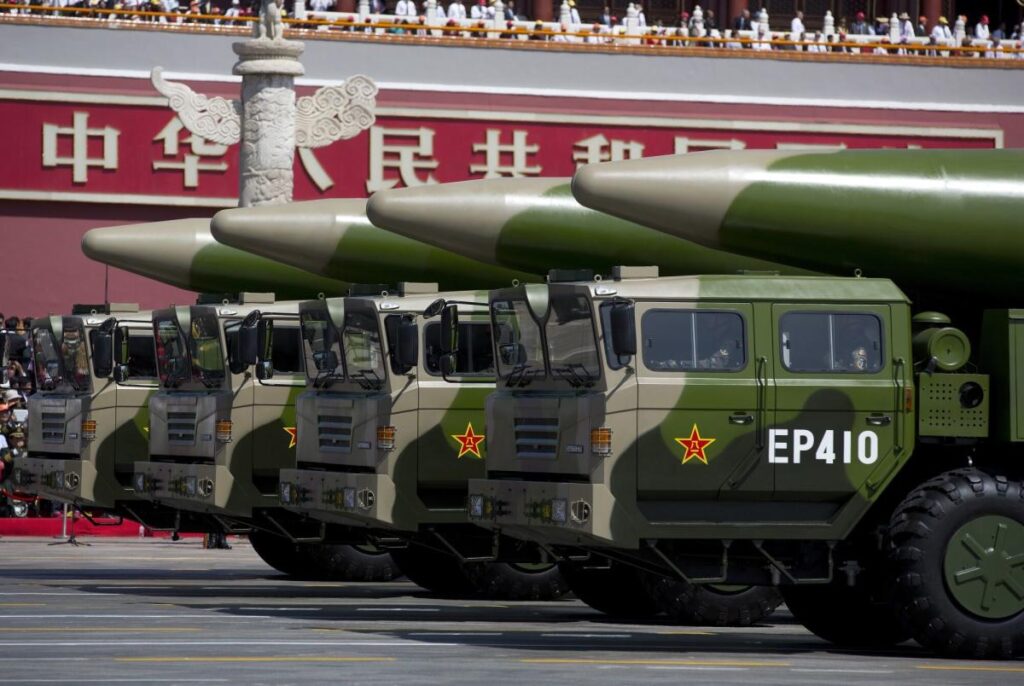(Bloomberg) — China said it has fired an intercontinental ballistic missile with a “dummy warhead” into the Pacific Ocean, a rare move that could increase tensions with the U.S. and its allies.
Most read from Bloomberg
The Chinese military said the launch by the People’s Liberation Army Rocket Force took place at 8:44 a.m. on Wednesday. The rocket fell in the “expected” area, it added, without saying where. ICBMs are designed to deliver a nuclear warhead to a target thousands of kilometers away.
“This test launch is a routine event in our annual training plan,” the Defense Department said in a statement on social media. “It is consistent with international law and practice and is not directed against any country or target.”
The launch comes as China and the US face a series of ongoing tensions, including the status of Taiwan, which China wants to control and which the US has promised to protect in the event of an invasion.
The PLA Rocket Force has come under scrutiny in recent years, with top officials investigated for corruption. U.S. intelligence agencies reportedly believe the sweeping purge came after it emerged that widespread corruption was undermining President Xi Jinping’s efforts to modernize the armed forces and raising questions about China’s ability to wage war.
The Pentagon warned last year that China continues to modernize, diversify and expand its nuclear arsenal, estimating the number of operational warheads at around 500 — and likely more than 1,000 by 2030.
“I feel like China’s nuclear modernization has led to a rethinking of testing requirements,” said Ankit Panda, Stanton Senior Fellow at the Carnegie Endowment for International Peace. “This missile may be part of a newer generation of ICBMs that have never been tested in the Pacific before. It’s another symptom of the new nuclear age that is dawning in Asia.”
The Chinese test comes as U.S. adversaries Russia and North Korea have stepped up programs to deploy ICBMs capable of striking the U.S. mainland.
Last year, North Korea tested its solid-fuel Hwasong-18 ICBM with leader Kim Jong Un in attendance. That ICBM flew longer than any of North Korea’s other long-range missiles and appeared to be designed to carry a payload of multiple nuclear weapons, increasing the chance that at least one bomb will slip past interceptors and find its way to a target.
This month, Russia appeared to suffer a setback in its ICBM program when its Sarmat intercontinental ballistic missile – known in the West as Satan II – suffered a “catastrophic failure” during a test launch, the Guardian newspaper reported. The newspaper said satellite images showed a crater at a launch site, suggesting the missile had exploded in a silo.
(Updated with more context.)
Most read from Bloomberg Businessweek
©2024 Bloomberg LP

